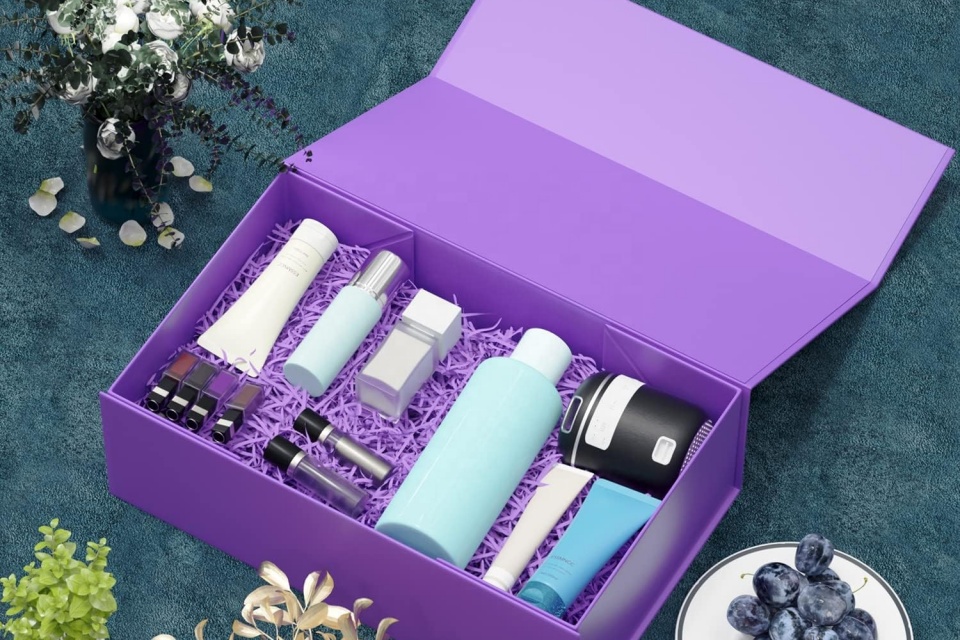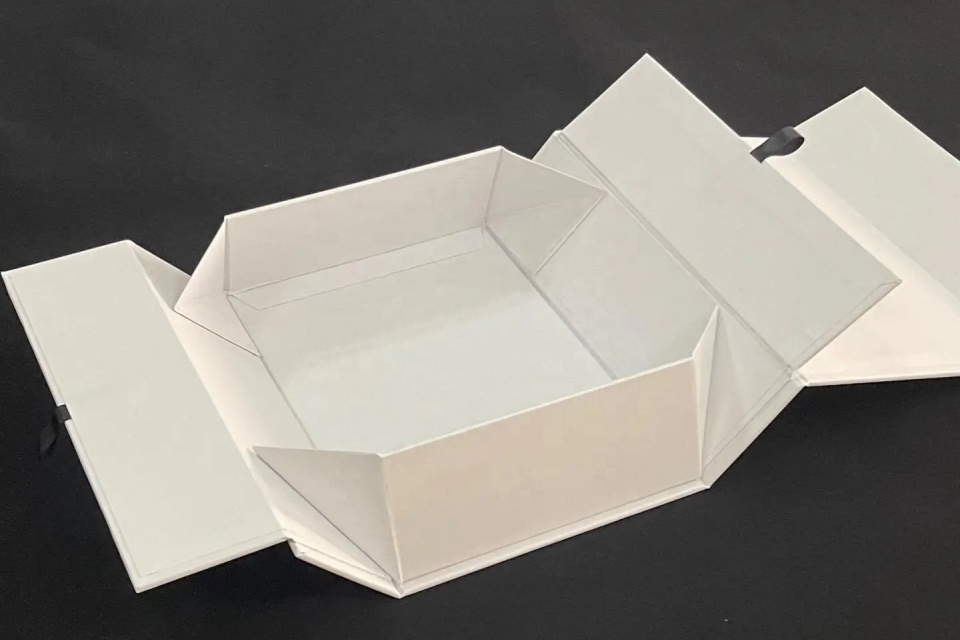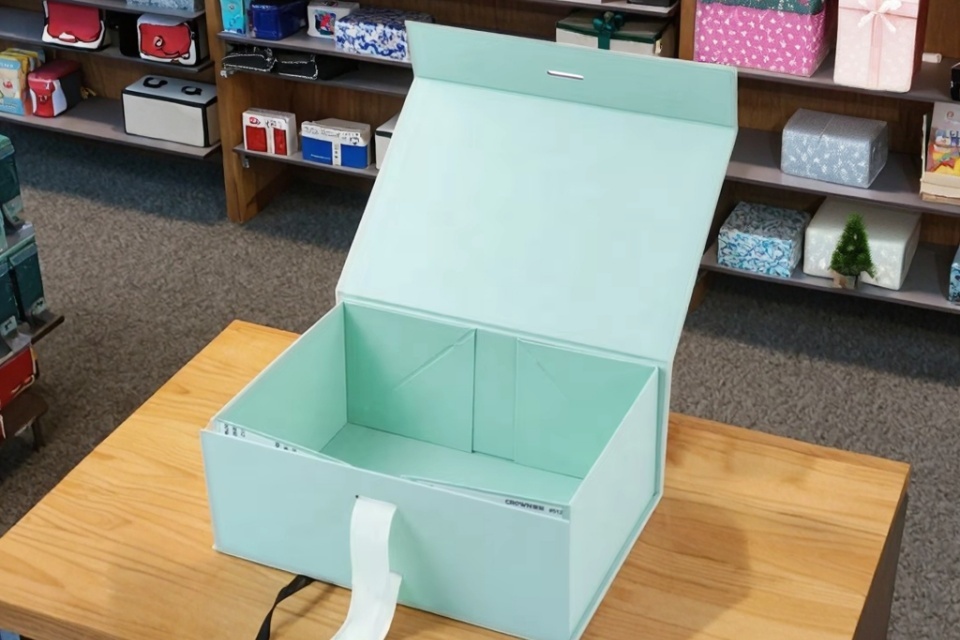Our News
Top Packaging Design Trends For 2025
Top Packaging Design Trends For 2025
Summary
As the global market for packaging evolves, the top packaging design trends for 2025 highlight a significant shift toward sustainability, consumer engagement, and aesthetic innovation. These trends are shaped by increasing consumer awareness of environmental issues and a growing demand for personalized and interactive experiences. Sustainable packaging, which encompasses eco-friendly materials and practices, is becoming essential as brands strive to align their values with those of environmentally conscious consumers, who are increasingly willing to pay a premium for products that are responsibly packaged.
The push for sustainability is characterized by the adoption of recyclable, biodegradable, and compostable materials, as well as advancements in technology that enhance recycling processes. Innovations such as smart packaging, which integrates technology for improved consumer interaction, and advanced recycling methods are reshaping the industry and offering new solutions to longstanding waste problems. Furthermore, regulatory influences, such as the European Union's Packaging and Packaging Waste Regulation, are compelling companies to reconsider their packaging strategies and contribute to a circular economy where materials are reused and recycled rather than discarded.
Aesthetic trends for 2025 also reflect a desire for authenticity and emotional connection in packaging design. From geometric shapes and bright colors to hand-drawn aesthetics and tactile qualities, brands are increasingly focused on creating visually appealing packaging that resonates with consumers on a personal level. This approach not only attracts attention but also fosters loyalty through memorable unboxing experiences. Additionally, the rise of minimalism and "quiet luxury" reflects a shift toward designs that emphasize simplicity, elegance, and authenticity, responding to consumer preferences for products that feel genuine and crafted with care.
Ultimately, these emerging trends in packaging design signify a broader transformation within the industry, driven by a confluence of consumer demand, technological advancements, and regulatory pressures. As brands navigate this evolving landscape, they are challenged to innovate while remaining responsive to the expectations and values of modern consumers, creating packaging solutions that are not only functional and appealing but also sustainable and meaningful.
Sustainable Packaging
Sustainable packaging refers to packaging solutions designed to minimize environmental impact throughout their lifecycle. This involves the use of materials that are recyclable, biodegradable, compostable, or derived from renewable sources. The objective is to create a closed-loop system where materials are reused, recycled, or biodegraded rather than contributing to landfill waste or ecosystem pollution.
Key Principles of Sustainable Packaging
The core principles of sustainable packaging include minimizing packaging waste by optimizing design and using less raw material, ensuring that packaging can be easily recycled or reused, and incorporating biodegradable materials to reduce long-term pollution. Businesses are increasingly adopting minimalist packaging solutions that reduce excess materials while maintaining product integrity.
Types of Eco-Friendly Materials
Several eco-friendly packaging materials have gained prominence, including: Biodegradable Materials: These materials are designed to break down naturally and reduce environmental impact. Common options include plant-based plastics, cellulose, and starch blends, which can decompose more quickly than traditional plastics. Plant-Based Alternatives: Materials such as cornstarch, mushroom mycelium, and seaweed-based films offer biodegradable options that decompose rapidly, thereby minimizing their environmental footprint. Recycled and Recyclable Materials: Many brands prioritize post-consumer recycled (PCR) materials, including recycled plastics and paper products, to reduce the reliance on virgin materials and support a circular economy.
Innovations in Sustainable Packaging
As consumer demand for greener products increases, companies are implementing innovative packaging solutions. This includes advancements in biopolymers and smart packaging technologies that enhance sustainability while improving user experience. Companies are also exploring packaging designs that not only cut down on excess materials but also create engaging unboxing experiences for consumers, thus combining functionality with aesthetics.
Benefits for Businesses
Adopting sustainable packaging can yield several benefits for businesses, including enhanced brand loyalty and alignment with consumer values regarding environmental responsibility. Small businesses, in particular, can take practical steps such as sourcing eco-friendly materials, reducing unnecessary packaging through minimalist designs, and implementing return and reuse programs to foster sustainability. As the market for sustainable packaging is projected to grow significantly, companies are increasingly recognizing the importance of integrating sustainability into their packaging strategies to meet both regulatory requirements and consumer expectations.
Technological Innovations
The packaging industry is witnessing a wave of technological innovations aimed at enhancing sustainability and consumer engagement. These advancements not only address environmental concerns but also cater to evolving consumer preferences.
Smart Packaging
One of the most prominent trends is the emergence of smart packaging, which integrates technology into packaging solutions to improve functionality and interaction with consumers. Features such as QR codes and augmented reality (AR) are being utilized to provide additional product information, interactive experiences, and improved traceability. This innovation enhances consumer engagement and allows brands to gather valuable data on consumer behavior, thereby fostering transparency and loyalty.
Advanced Recycling Technologies
Significant advancements in recycling technologies are also shaping the future of packaging. Chemical recycling has emerged as a breakthrough, enabling traditionally difficult-to-recycle materials, such as mixed plastics, to be broken down into their basic components. This method is particularly beneficial for materials like expanded polystyrene (EPS), which can be converted back into reusable forms, thereby reducing reliance on landfills. Additionally, Al-powered recycling systems are being deployed in recycling facilities worldwide to enhance sorting accuracy and efficiency. By effectively identifying and sorting various materials, these systems ensure cleaner recycling streams, leading to higher recycling rates and reduced contamination levels.
Minimalistic and Authentic Designs
In parallel to technological advancements, there is a growing trend toward minimalistic and authentic packaging designs. Brands are increasingly adopting designs that reflect a human touch, moving away from overly polished aesthetics. This trend not only resonates with consumers seeking authenticity but also reinforces the message that products are crafted with care.
Biodegradable and Compostable Materials
The development of biodegradable and compostable packaging materials represents another key innovation in the industry. These materials break down naturally over time or decompose into nutrient-rich compost under specific conditions, addressing the issue of packaging waste. As consumer demand for sustainable options rises, companies are investing in research and development to create functional yet eco-friendly packaging solutions.
Aesthetic Trends
In 2025, packaging design is expected to be heavily influenced by a range of aesthetic trends that emphasize both visual appeal and emotional connection with consumers.
Geometric Shapes and Bright Colors
One prominent trend involves the use of geometric shapes paired with bright colors or photography. This approach aims to create eye-catching designs that resonate across various product categories, enhancing the overall graphic and packaging design experience.
Retro and Futuristic Elements
Another key trend is the blending of analog and retro elements with futuristic designs. This mix incorporates classical imagery into modern environments, producing visuals that feel both nostalgic and innovative. As predicted by design platforms like Canva and Adobe, this trend may manifest through collages or the combination of traditional elements with Al-generated imagery.
Quiet Luxury
The concept of "quiet luxury" is gaining traction, characterized by clean, simple designs enriched with subtle, elegant details. This trend focuses on the use of space and minimalist fonts, creating a sense of balance and sophistication without overwhelming the viewer.
Hand-Drawn Aesthetics
In contrast to polished, digital designs, some brands are turning to hand-drawn aesthetics. This trend embraces imperfection, utilizing raw illustrations and handwritten fonts to evoke warmth and authenticity. Such designs foster emotional connections, appealing to consumers' desires for genuineness and personal storytelling.
Neo-Minimalism
Neo-minimalism represents an evolution of traditional minimalism, emphasizing bold contrasts and significant negative space. This aesthetic strives for simplicity, featuring clean geometric shapes and only a few striking details. Brands adopting this style aim to stand out in a crowded market while maintaining a modern and cutting-edge image.
Tactile Packaging
The tactile quality of packaging is increasingly important, especially in the luxury segment. Tactile Packaging that mimics premium textures, such as leather or silk, enhances perceived value and invites consumer interaction. This trend not only elevates the product's aesthetic but also contributes to higher sales through sensory engagement.
Visual Nostalgia
Visual nostalgia remains a strong influence, with packaging designs inspired by the 1940s and 1950s making a comeback. This trend incorporates retro-futuristic fonts and classic color schemes, evoking familiarity and warmth through handcrafted textures and nostalgic motifs. By embracing these aesthetic trends, brands can create packaging that not only attracts consumers but also builds a lasting emotional connection, ultimately influencing purchasing decisions and brand loyalty.
Consumer-Centric Design
Consumer-centric design in packaging focuses on understanding and addressing the needs and preferences of consumers, ultimately enhancing their purchasing experience. This approach emphasizes several key elements that influence consumer behavior and drive sales.
Visual Appeal and First Impressions
The visual appeal of packaging is critical in capturing consumer attention and making a positive first impression. Research indicates that consumers often make purchasing decisions in mere seconds, with attractive designs significantly influencing these split-second choices. Packaging that features vibrant visuals, clean logos, and innovative design can effectively encourage consumers to try new products, such as unfamiliar fruits or snacks. Brands that invest in compelling packaging designs are likely to stand out on the shelves and attract more buyers.
Eco-Friendliness and Sustainability
Sustainable packaging is increasingly vital for brands looking to resonate with eco-conscious consumers. A significant number of shoppers are willing to pay a premium for products that feature eco-friendly packaging, as evidenced by surveys indicating that 81% of consumers believe companies should contribute to environmental improvement, and 73% are ready to change their buying habits to lessen their environmental impact. This trend underscores the importance of integrating sustainable materials and practices into packaging design, as consumers increasingly prioritize eco-friendly options in their purchasing decisions.
Personalization and Customization
Personalization is a powerful tool for enhancing consumer engagement through packaging design. Initiatives like Coca-Cola's “Share a Coke” campaign, which featured personalized bottles with popular names, have successfully increased consumer interaction and brand loyalty. Custom packaging creates a unique experience, making consumers feel valued and fostering a stronger connection with the product. As digital printing technology advances, it has become more feasible and cost-effective for brands to offer customized packaging solutions that cater to individual consumer preferences.
Transparency and Informative Packaging
Consumers are demanding greater transparency from brands, making it crucial for packaging to provide clear and informative content. Transparent packaging builds trust and allows shoppers to make informed choices about the products they purchase. Informative packaging that highlights a product's benefits, ingredients, and sustainability credentials can significantly enhance the consumer experience, leading to increased satisfaction and loyalty.
Adaptability to Modern Lifestyles
The shift toward more convenient and tailored packaging solutions reflects an understanding of evolving consumer lifestyles. For busy individuals, compact single-serve options cater to the need for convenience, while families may prefer larger, multi-serve formats designed to reduce waste and maximize value. By addressing real-world challenges through thoughtful design, brands can better engage their target audiences and meet their specific needs.
Regulatory Influences
Regulatory changes are significantly shaping the packaging industry as companies adapt to evolving standards and consumer expectations regarding sustainability. Recent legislation and regulations, such as the European Union's Packaging and Packaging Waste Regulation (PPWR) and the United Kingdom's Extended Producer Responsibility (EPR) requirements, mandate recyclable or reusable packaging by 2030. These policies establish binding conditions that compel companies to reconsider their packaging materials and design approaches, emphasizing compliance and environmental responsibility.
As awareness of environmental concerns grows, consumer preferences are increasingly aligned with sustainable practices. This shift in consumer behavior is further influenced by government regulations, which dictate packaging standards and promote sustainability. Companies must therefore proactively navigate these regulatory landscapes to remain competitive, engaging with experienced product packaging manufacturers to ensure compliance and mitigate risks associated with non-compliance.
The introduction of Extended Producer Responsibility laws in several U.S. states exemplifies this trend, encouraging businesses to take responsibility for the entire lifecycle of their packaging products, thereby enhancing sustainability efforts and fostering a culture of accountability within the industry. Furthermore, the focus on material health has emerged as a critical aspect of packaging regulations, prompting brands to prioritize the safety of packaging materials for both consumers and the environment.
In response to these regulatory pressures, the packaging industry is witnessing innovation in materials and design, as companies explore sustainable solutions such as monomaterial packaging that simplifies recycling processes and reduces environmental impact. This transformation is indicative of a broader movement toward a circular economy, where packaging is designed not just for use but also for reuse and recyclability, ultimately contributing to a reduction in packaging waste and environmental degradation.
Case Studies
Importance of Case Studies in Packaging Design
Studying successful package design case studies provides valuable insights for businesses and creatives involved in pre-press and packaging design solutions. Notable brands such as Apple, Coca-Cola, and Tiffany & Co. exemplify how effective package design can significantly influence consumer behavior and drive sales. These case studies illustrate the importance of incorporating psychological elements into packaging to create solutions that resonate with target audiences and contribute to overall product success.
Successful Examples
Apple Apple's packaging design is renowned for its minimalistic approach and attention to detail. The unboxing experience of an Apple product is carefully curated to evoke a sense of excitement and premium quality. By using high-quality materials and clear branding, Apple enhances the perception of its products and establishes a strong emotional connection with consumers.
Coca-Cola Coca-Cola has successfully leveraged its iconic red and white branding across various packaging formats, maintaining brand recognition and consumer loyalty. The company frequently experiments with limited-edition designs that create a sense of urgency and exclusivity, driving sales and engagement among consumers. Their approach demonstrates the power of nostalgia and emotional appeal in packaging design.
Tiffany & Co. Tiffany & Co. is another excellent example of effective packaging design, utilizing its signature blue box to create a sense of luxury and desirability. The brand's packaging not only protects the product but also serves as a key component of the overall experience, reinforcing the brand's identity and values. The tactile and visual elements of Tiffany's packaging contribute to a lasting impression that enhances consumer perceptions of value and quality.
Industry-Specific Trends
Sustainable Packaging in Food Industry
The food industry is experiencing a substantial shift towards eco-friendly packaging driven by increasing consumer awareness regarding environmental issues. Consumers are now more conscious of their ecological footprint, which significantly influences their purchasing decisions, emphasizing the importance of sustainable packaging solutions. As businesses recognize this shift, they are incorporating biodegradable and recycled materials into their packaging designs, aligning sustainability with functionality without compromising usability.
The Impact of Regulations
Regulatory changes are increasingly shaping the dynamics of the packaging industry. Companies must proactively navigate and influence these developments to remain competitive. Collaborating with experienced packaging manufacturers can assist businesses in understanding and complying with evolving regulations, ensuring their packaging strategies are both compliant and future-proof. This need for adaptability is further emphasized as consumer priorities continue to evolve rapidly, making it crucial for companies to look beyond traditional strategic planning windows.
Minimalistic and Innovative Designs
The trend towards minimalistic packaging designs is gaining traction as brands seek to appeal to environmentally conscious consumers. This includes the use of eco-friendly materials and innovative concepts such as edible packaging. Such trends not only meet regulatory requirements but also resonate with a growing demographic that prioritizes sustainability in their purchasing decisions. Companies that embrace these minimalist approaches are likely to gain a competitive edge as they align with consumer expectations.
The Role of Technology
Technological advancements are transforming packaging design, enabling brands to create packaging that is both visually appealing and sustainable. Innovations such as multi-use formats and integrated features, like ready-to-eat cereal cups with built-in utensils, are becoming popular. These designs elevate consumer experience by blending convenience with sustainability, reinforcing brand value through thoughtful innovation.
Consumer Behavior and Brand Visibility
In the competitive landscape of produce packaging, brands are increasingly focusing on design to enhance visibility and consumer engagement. Unlike more aggressively marketed snacks, produce packaging must tell a subtle story that influences how consumers interact with fresh foods. The challenge lies not just in brand competition but in capturing consumer interest in the category itself. Effective packaging design can communicate quality, trust, and emotional appeal, setting brands apart in a crowded market.
Categories
Latest News
Contact Us
Contact: Aaron Lee
Phone: +8613570866244
Tel: +8675529490260
Add: Li Songlang 2nd Industrial Zone,No.18,FengTang Rd,Guangming New District


